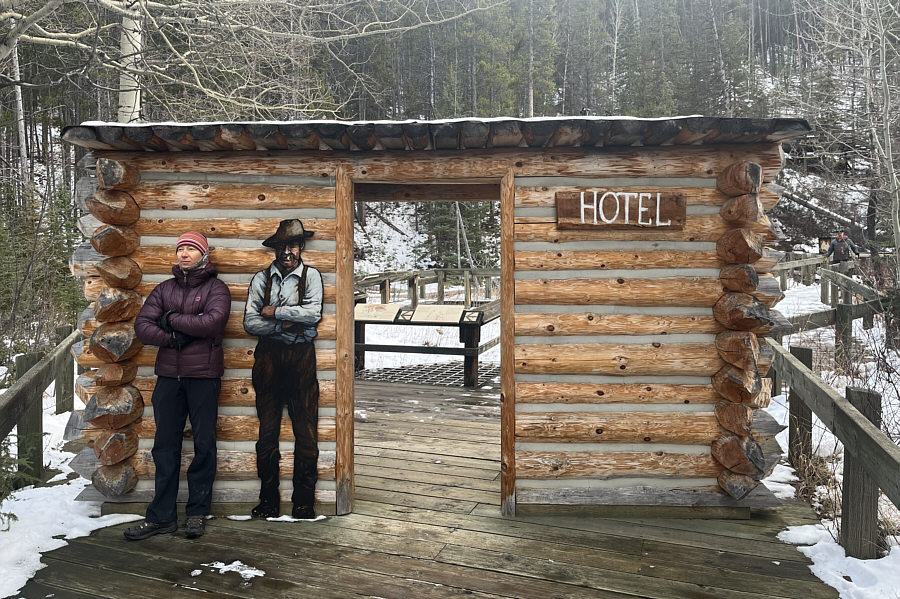
Zosia examines bubbles under the ice at Johnson Lake.

 |
Zosia examines bubbles under the ice at Johnson Lake. |
 |
Zosia admires some hoodoos situated above the Trans-Canada Highway with Mount Rundle in the background. |
 |
Some scuba divers emerge from the icy
waters of Lake Minnewanka. Photo courtesy of Zosia Zgolak |
 |
A couple of white-tailed deer are
startled by some passers-by. Photo courtesy of Zosia Zgolak |
 |
The top of Cascade Mountain is obscured by clouds as Zosia walks along Lake Minnewanka Scenic Drive en route to the trailhead for Tessa Falls. |
 |
The trail to Tessa Falls crosses under this power line. |
 |
Sonny carefully descends a steep
and icy embankment. Photo courtesy of Zosia Zgolak |
 |
On this day, Tessa Falls is characterized by a mix of water, ice and colourful rock. |
 |
An ice leaf seemingly grows from this
tree branch which is partially-submerged in the waters of Cascade
River. Photo courtesy of Zosia Zgolak |
 |
Total Distance: 3.0 kilometres Round-Trip Time: 1 hour 7 minutes Cumulative Elevation Gain: 47 metres |
 |
Zosia follows a snowy but well-traveled trail to Silverton Falls. |
 |
The trail rises across this open slope shortly before the falls. |
 |
Zosia arrives at Silverton Falls. |
 |
As she turns to leave Silverton Falls, Zosia gets a glimpse of Vista Peak in the distance. |
 |
Total Distance: 2.0 kilometres Round-Trip Time: 47 minutes Cumulative Elevation Gain: 75 metres |
 |
A commemorative plaque is all that remains on the site of the former Alpine Club of Canada clubhouse in Banff. |
 |
Zosia fits right in with a "local" at the "hotel" above Cave and Basin National Historic Site. |
 |
The boardwalks follow the flow of water back to the sources up the slope. |
 |
This is one of the hot springs which feeds the pools at Cave and Basin. |
 |
Access to most of the hot springs
emanating from Sulphur Mountain is prohibited in order to protect the
Banff Springs snail (Physella johnsoni). Photo courtesy of Zosia Zgolak |
 |
This platform grants a fine view of Mount Norquay across the valley. |
 |
Zosia stands under some military recruiting posters at the First World War Internment Exhibit. |